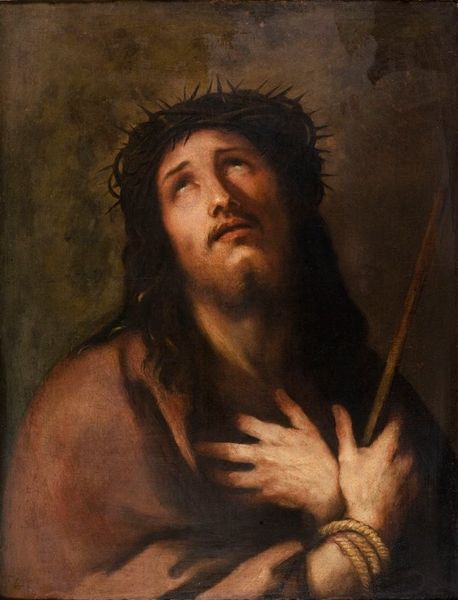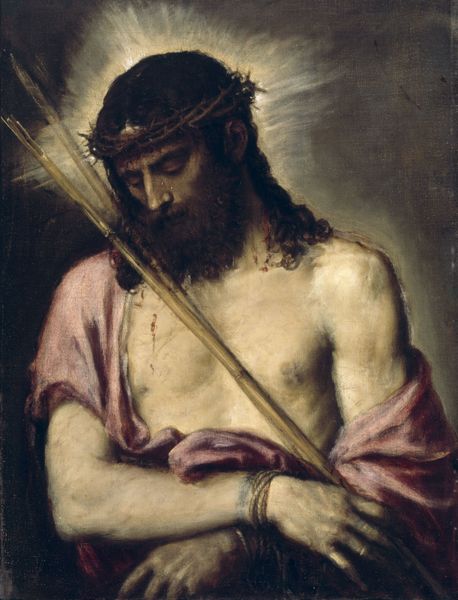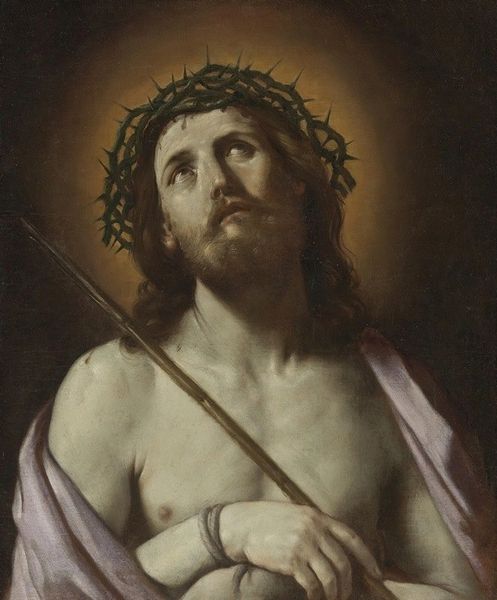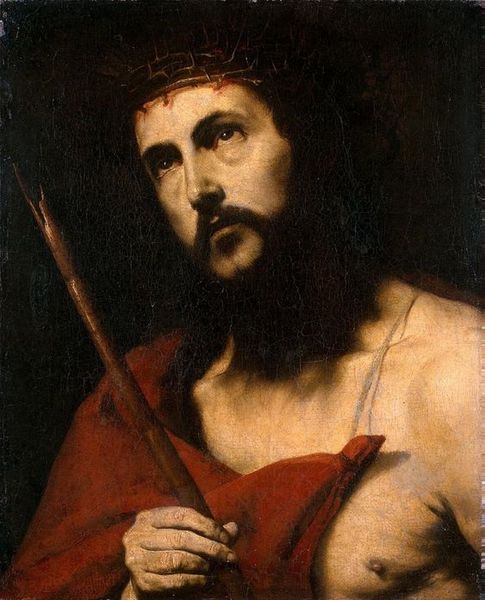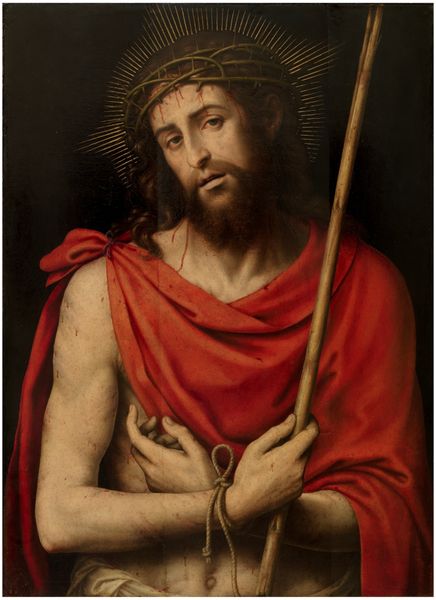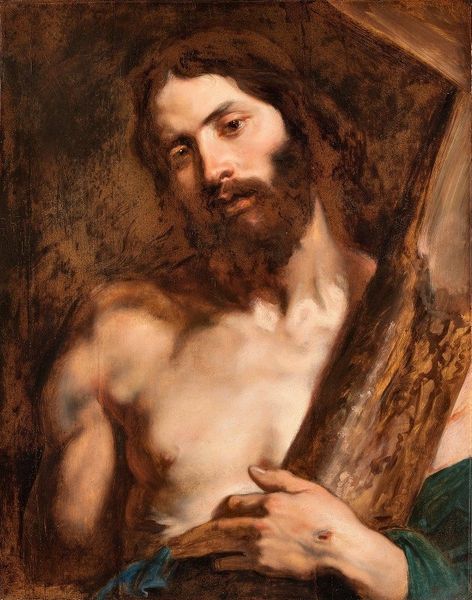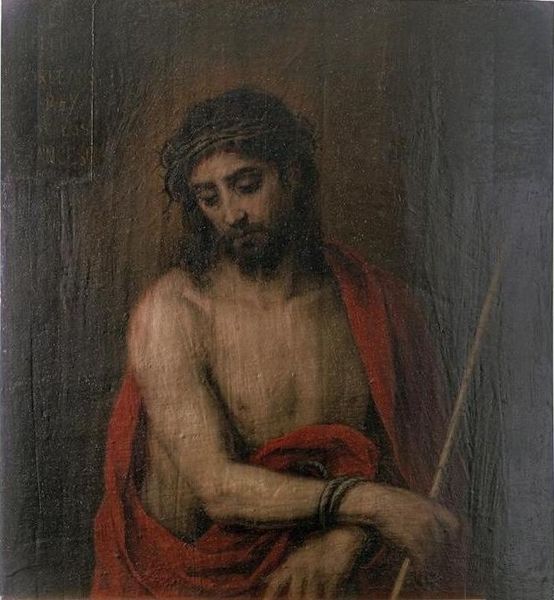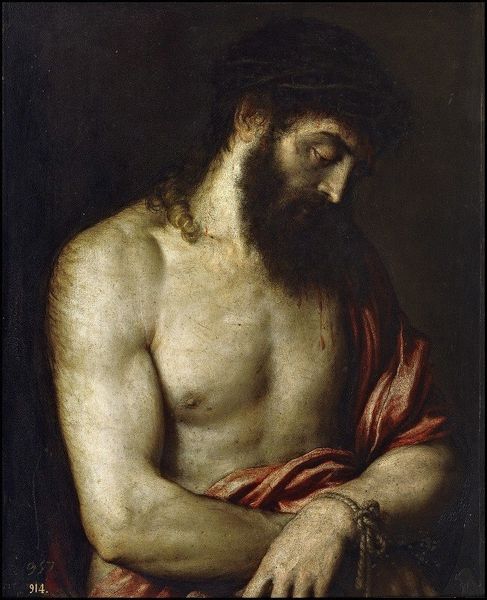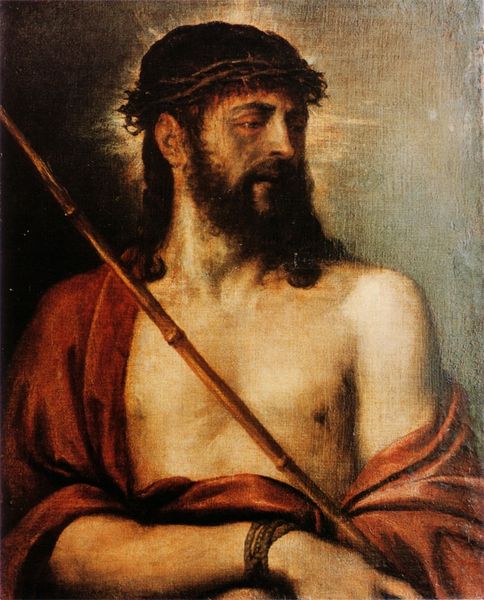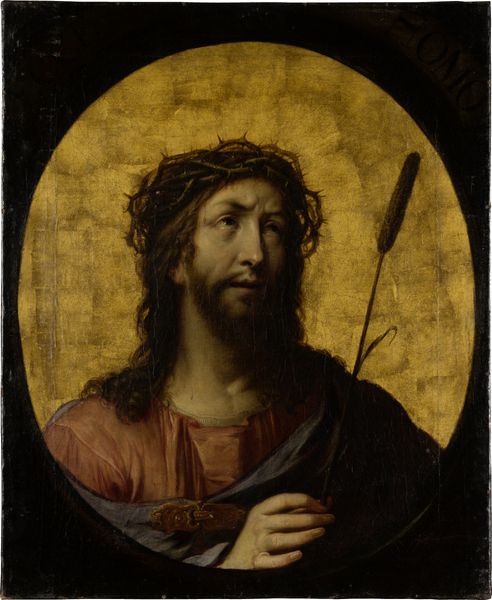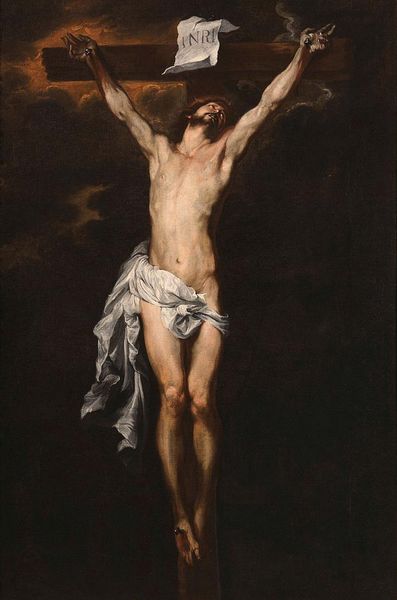
painting, oil-paint
#
portrait
#
baroque
#
painting
#
oil-paint
#
chiaroscuro
#
history-painting
Copyright: Public Domain: Artvee
Bartolomé Estebán Murillo created this oil painting, titled ‘Ecce Homo,’ meaning ‘Behold the Man,’ in seventeenth-century Spain. Murillo uses the image of Christ to explore ideas of suffering, piety, and the redemptive power of faith, themes which had a particular resonance in Counter-Reformation Spain. The visual codes of the painting, from the crown of thorns to the rope binding Christ’s wrists, are all instantly recognizable symbols of Christian iconography. In the context of seventeenth-century Spain, art was often commissioned and controlled by the Catholic Church, and was consciously used to inspire religious feeling. Murillo, however, adds a distinctly human element to this image of Christ. His face is not that of a divine being, but of a man exhausted and in pain. To fully understand the social and cultural context of a work like this, a historian might consult Church records, examine the biographies of patrons, and study the popular devotional literature of the period. Only then can we begin to grasp the complex ways in which art reflects and shapes social attitudes.
Comments
No comments
Be the first to comment and join the conversation on the ultimate creative platform.
